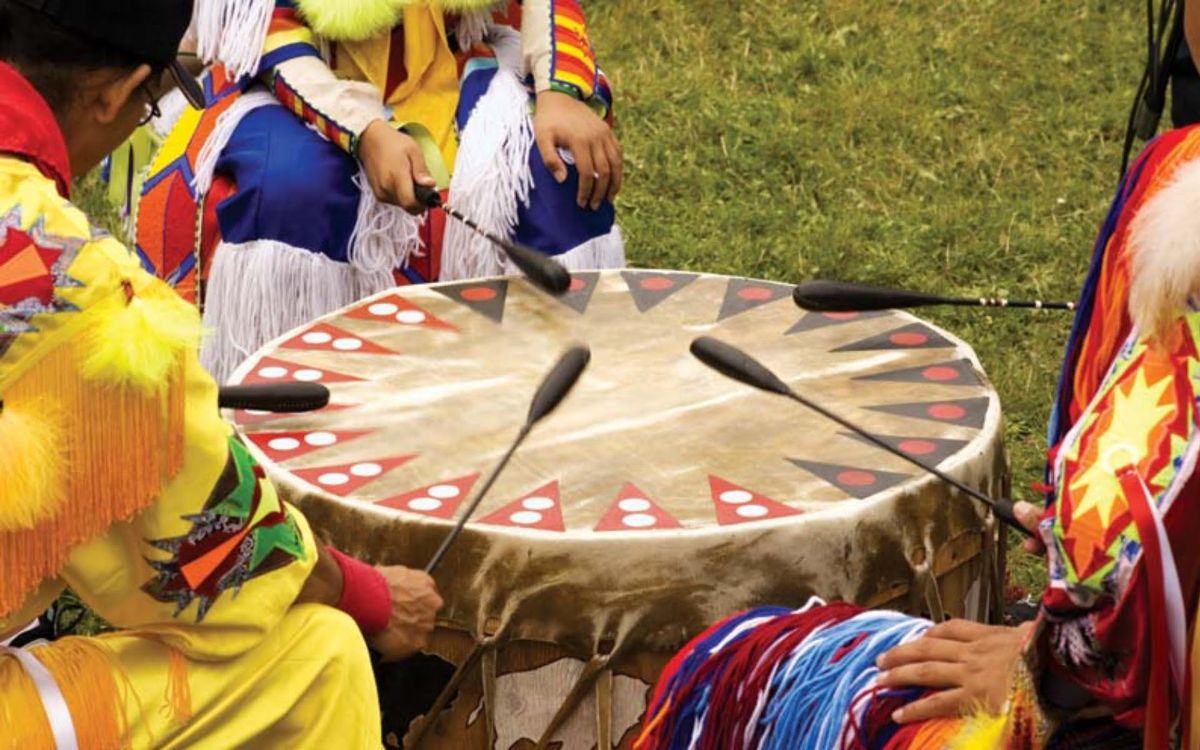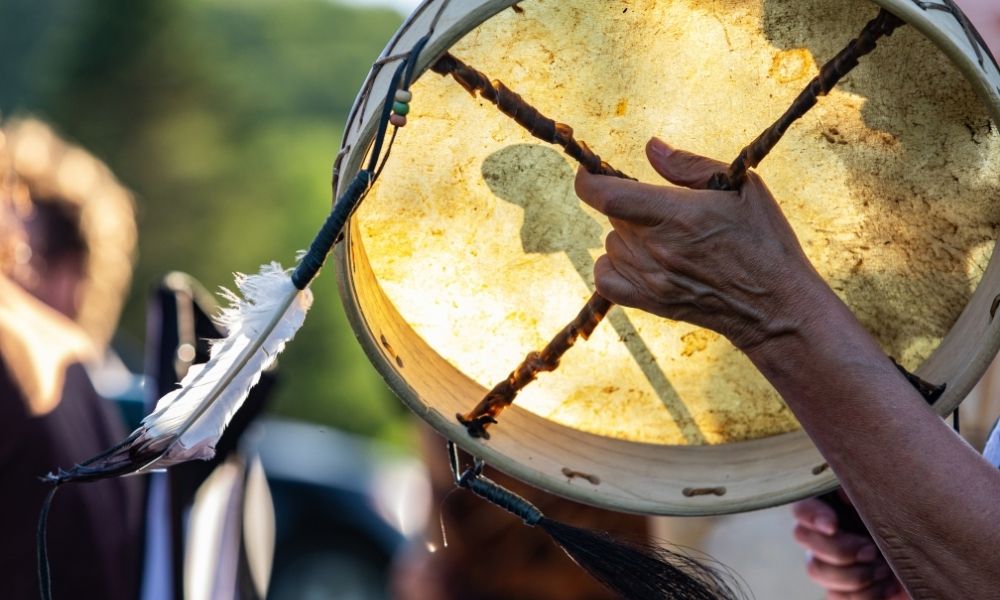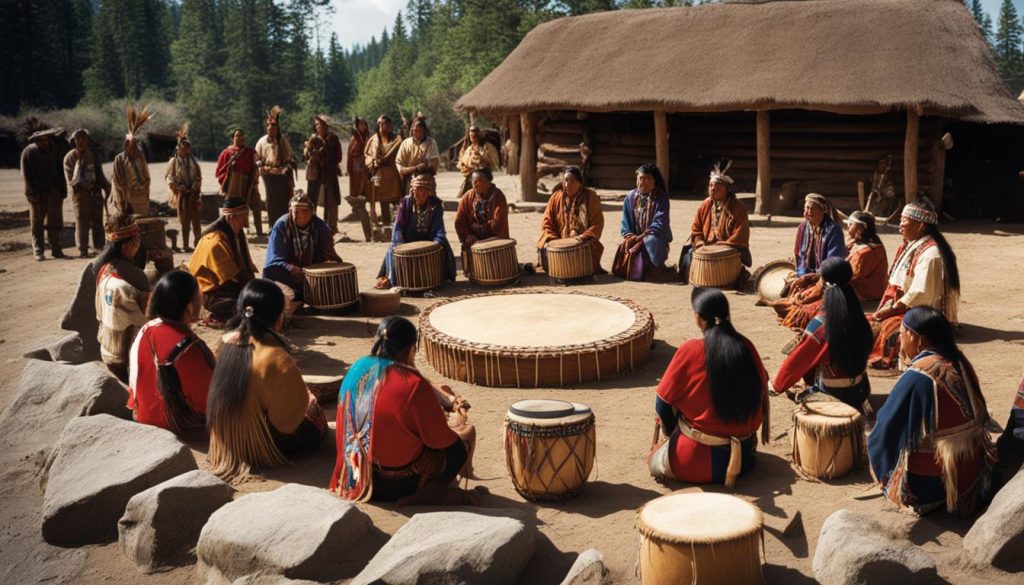
The Resonant Heartbeat: Native American Drum Making as Sacred Sound Creation and Cultural Significance
The air stills, then vibrates. A deep, resonant thrum begins, a rhythm that seems to bypass the ears and settle directly into the chest, a primal pulse echoing the very beat of existence. This is the sound of the Native American drum, an instrument far more profound than its simple construction suggests. It is not merely a percussive device; it is a living entity, a sacred voice, and the tangible heartbeat of Indigenous cultures across North America. The creation of such a drum is a profound spiritual journey, a meticulous act of reverence that transforms natural elements into a vessel of ancestral memory, prayer, and community connection.
From the majestic powwow drums, often several feet in diameter and played by a circle of drummers, to the intimate hand drums used for personal ceremony and song, each instrument carries with it the stories, prayers, and spirits of its makers and the lands from which its components are drawn. For countless Native nations – the Lakota, Ojibwe, Navajo, Cherokee, Iroquois, and many more – the drum serves as a vital conduit to the spiritual realm, a tool for healing, a recorder of history, and a unifying force in times of celebration and sorrow.
The Drum’s Sacred Identity: More Than an Instrument
To understand Native American drum making, one must first grasp the drum’s identity. It is widely considered "the heartbeat of Mother Earth," a direct connection to the fundamental rhythm of life itself. Unlike a manufactured object, a Native American drum is "brought into being" rather than simply "made." This distinction highlights the spiritual preparation and intention that precedes and permeates every step of its creation. Before any materials are gathered, prayers are offered, intentions are set, and often, purification rituals are performed. The maker seeks guidance and permission from the spirits of the land, the trees, and the animals whose lives will contribute to the drum’s formation.
"The drum is alive," states many Indigenous elders, a sentiment echoed by countless traditionalists. "It has a spirit, and it speaks to us. When you make a drum, you are not just crafting wood and hide; you are inviting a spirit to dwell within it, to sing through it, and to guide your people." This belief elevates drum making from a craft to a sacred art form, demanding respect, patience, and a deep understanding of the interconnectedness of all things.

Materials and Their Spiritual Significance: A Symphony of Nature
Every component of a Native American drum holds symbolic and spiritual significance, chosen not just for its physical properties but for its inherent spirit and story.
-
The Wood (Frame): The circular frame, often made from cedar, pine, oak, or maple, represents the tree from which it came – a symbol of strength, stability, and connection to the earth and sky. The tree’s life force is transferred to the drum, grounding its sound and spirit. The wood also signifies the circle of life, the continuous cycle of existence with no beginning and no end. The careful bending and shaping of the wood, often done through steaming or soaking, is a meditative process, an act of coaxing the natural world into a new form while honoring its original state.
-
The Hide (Drumhead): This is perhaps the most spiritually charged component. Typically made from the rawhide of deer, elk, buffalo, moose, or even horse, the hide represents the animal’s sacrifice and its spirit. Each animal imbues the drum with unique qualities:
- Deer: Often chosen for its gentle spirit, agility, and connection to the forest. Drums made from deer hide are often said to have a soft, clear tone.
- Elk: Represents strength, endurance, and a connection to the mountains. Elk hide drums typically produce a deeper, more resonant sound.
- Buffalo (Bison): Symbolizes power, abundance, and the life-giving force of the plains. Buffalo hide drums are known for their profound, booming resonance, capable of shaking the ground.
- Moose: Carries the spirit of resilience and wisdom.
- Horse: Represents swiftness, freedom, and communication.

The preparation of the hide is a meticulous process. It is soaked, scraped clean of all flesh and hair, then stretched taut over the wooden frame. This stretching is not just a physical act; it’s a spiritual one, requiring the maker to draw out the essence of the animal, allowing its spirit to sing through the drum. Prayers are often offered during this stage, thanking the animal for its gift and asking for its spirit to bless the drum.
-
The Lacing/Binding: Rawhide strips are used to lace the drumhead to the frame, creating the intricate patterns visible on the drum’s underside. This lacing is more than functional; it symbolizes the interconnectedness of all things – the web of life that binds the animal, the tree, the maker, and the community together. Often, the lacing forms a four-direction pattern, representing the cardinal points, the four elements, or the four stages of life, ensuring balance and harmony.
-
The Beater: The beater, typically a wooden stick wrapped in hide or fur, is an extension of the drummer’s arm and intention. It is also crafted with care, often decorated, and becomes an integral part of the drum’s voice. The material wrapping the beater head can subtly influence the drum’s tone, adding another layer of intentionality to the sound.
The Maker’s Journey: A Spiritual Craft
Drum making is not a casual hobby; it is a spiritual discipline, a path often passed down through generations. A drum maker is not merely a craftsman but a custodian of tradition, a storyteller, and a spiritual guide. The process demands immense patience, reverence, and a deep understanding of the cultural and spiritual significance of each step.
"Every drum tells a story, and the maker is the first one to hear it," says a contemporary drum maker from the Cherokee Nation. "You don’t just cut and glue; you listen to the materials. You feel their spirit. You pray for their blessing. The drum becomes a part of you, and you become a part of the drum."
The maker imbues the drum with their own spirit, their prayers, and their intentions. This personal connection ensures that each drum is unique, a distinct voice reflecting its creator and its intended purpose. Many makers will fast, cleanse themselves, or engage in ceremony before beginning a drum, ensuring their mind, body, and spirit are pure and focused on the sacred task. The act of making itself becomes a form of prayer, a meditative dance between human hands and natural elements, guided by ancestral wisdom.
Cultural Significance and Usage: The Pulse of Community
Once completed, the drum is often "awakened" or "blessed" in a special ceremony, formally initiating its role as a sacred instrument. Its uses are as diverse as the Indigenous nations themselves:
- Ceremonial Drums (Powwow Drums): Large community drums, often played by multiple drummers (known as a drum circle), are central to powwows and other large gatherings. They represent the collective heartbeat of the people, their powerful rhythms accompanying dances, songs, and prayers, unifying the community in celebration and shared identity. The sound of these drums can carry for miles, a vibrant call to gathering.
- Hand Drums: Smaller and more personal, hand drums are used for individual prayers, healing ceremonies, storytelling, and teaching. They offer a more intimate connection between the drummer and the drum’s spirit.
- Frame Drums: These are among the most common types, with the hide stretched over a shallow wooden frame. They are versatile and found across many Indigenous traditions.
- Water Drums: Unique to certain nations, such as the Iroquois and Ojibwe, water drums are partially filled with water, which is then covered by a membrane. The water alters the pitch and resonance, creating a distinct, often described as "gurgling" or "throbbing" sound. These drums symbolize the life-giving force of water and are often used in healing and social ceremonies, sometimes representing the womb or primordial waters.
Beyond ceremonial use, drums play a crucial role in social gatherings, educational settings, and the ongoing effort to maintain and revitalize Indigenous languages and traditions. They connect past, present, and future generations, acting as a living archive of culture.
Challenges and Resilience: The Drum’s Enduring Voice
The history of Native American drums, like the history of Indigenous peoples, is marked by periods of suppression. Colonial policies actively sought to eradicate Native cultures, often banning traditional ceremonies and the use of drums. Despite these efforts, the spirit of the drum persevered, kept alive in secret ceremonies and passed down through resilient oral traditions.
Today, there is a powerful resurgence of drum making and drumming traditions. Indigenous communities are reclaiming their cultural heritage, and the drum stands as a potent symbol of survival, strength, and continuity. Contemporary drum makers, often working with respect for ancient methods while sometimes incorporating modern tools, are ensuring that this sacred art form thrives, educating younger generations and sharing the profound beauty and meaning of the drum with the wider world.
Conclusion: The Enduring Resonance
The Native American drum is far more than an instrument; it is a repository of spirit, history, and community. Its creation is a journey of reverence, transforming elements of the natural world into a powerful voice that speaks to the soul. From the careful selection of wood and hide to the intricate lacing and the blessings offered, every step in drum making is an act of sacred creation.
As its resonant heartbeat echoes across lands, connecting individuals to their ancestors, their community, and the very pulse of Mother Earth, the Native American drum continues to serve as a vital link to identity, healing, and cultural continuity. Its sound is a testament to the enduring spirit of Indigenous peoples, a sacred voice that will resonate for generations to come, reminding all who listen of the profound connection between humanity, nature, and the timeless rhythm of life.


